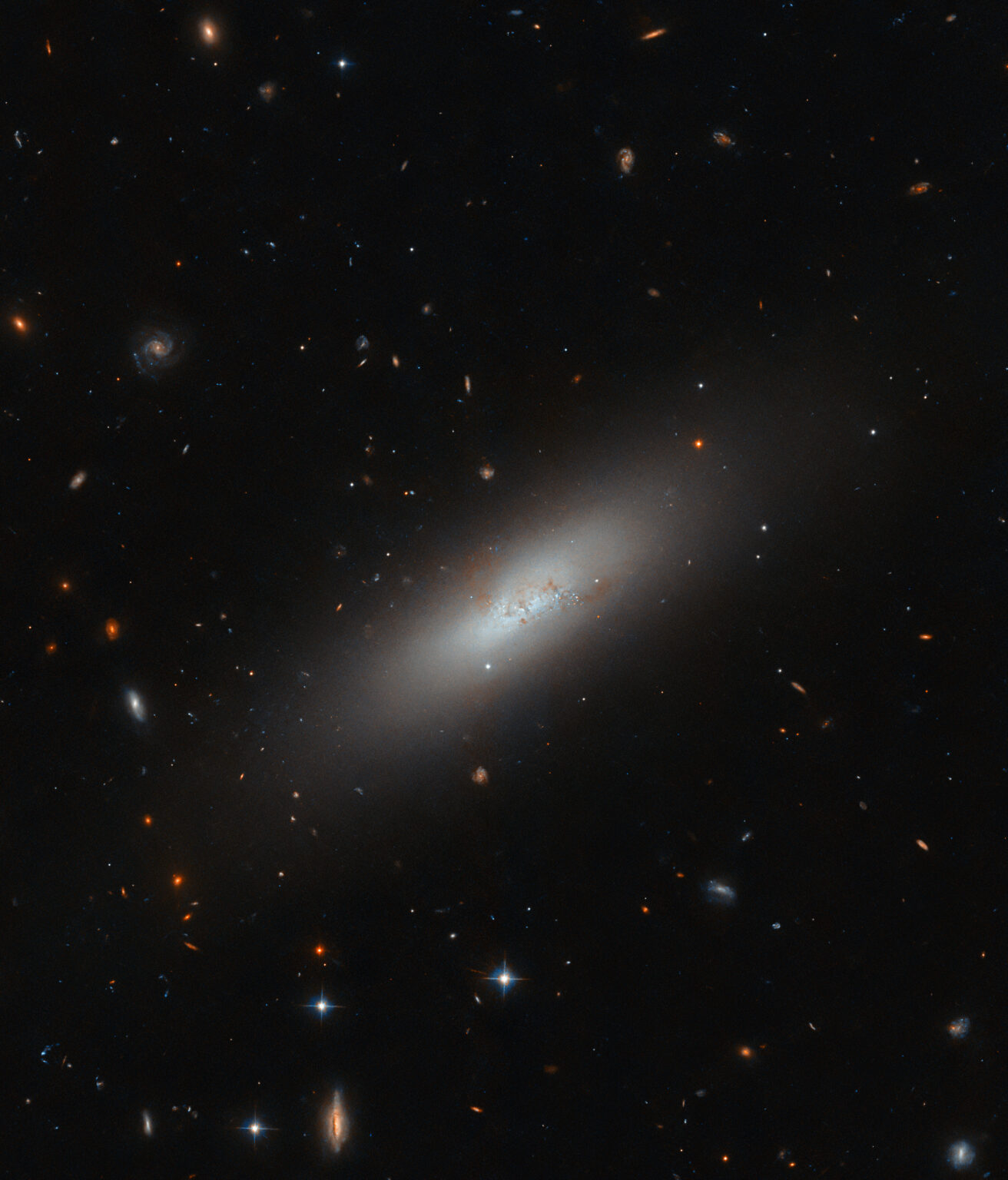The accompanying team of the Hubble mission has published a new image. It shows a dwarf galaxy called IC 3430.

The galaxy photographed by Hubble is located 45 million light-years from Earth. It is part of the Virgo cluster of more than a thousand large and small galaxies, many of which resemble IC 3430.
IC 3430 is classified as a dwarf elliptical galaxy. As with its larger relatives, it has a smooth oval shape, devoid of any recognizable features such as arms or stripes, and it contains little gas to form a large number of new stars.
Moreover, IC 3430 has a core of hot massive blue stars, which is rare for elliptical galaxies. This is evidence of a recent burst of star formation. It is thought to be caused by the pressure exerted by the gas filling the Virgo cluster (IC 3430 moves through it). It compacted the remaining gas in the galaxy’s core, leading to the formation of several new stars.
On average, dwarf galaxies contain less than a billion stars. By comparison, the stellar population of our Milky Way is between 100 and 400 billion stars. Nevertheless, this is often enough for them to reproduce the same shapes as larger galaxies. In addition to dwarf elliptical galaxies like IC 3430, there are also dwarf irregular galaxies, dwarf spheroidal galaxies, and even dwarf spiral galaxies.
Astronomers also identify Magellanic spirals, a distinct type of dwarf galaxy with a single spiral arm. Its most famous example is the Milky Way’s neighbors, the Magellanic Clouds.
According to Esahubble


